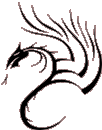INDIVIDUAL HERBS
| Pharmaceutical Latin: | Radix Paeoniae Rubra |
| Common English: | Red Peony Root |
| Taste | Temperature | Entering Meridians | Dosage |
| Sour Bitter |
Slightly Cold (Cool) |
Liver Spleen (Heart) |
4.5-15g Tincture: 2-4ml |
| Actions | Indications/Syndromes |
Invigorates the Blood, dispels Blood Stasis and relieves pain |
Blood Stasis with dysmenorrhea, amenorrhea, abdominal pain, fixed abdominal masses and varicose veines Traumatic injury with bruising, pain and swelling |
|
Clears Heat and cools the Blood |
Xue Stage Heat or Blood Heat with fever, a purple tongue, maculae, hemorrhage and Blood Heat gynecological problems |
| Clears Liver Fire and relieves eye pain | Liver Fire with redness, swelling and pain of the eyes |
| Reduces swelling from sores and abscesses | Early stage abscesses and boils |
CONTRAINDICATIONS |
|
INCOMPATIBILITIES |
|
HERB/DRUG INTERACTIONS |
|
Rx. Ligustici Chuanxiong |
Sm. Persicae
|
Rz. Cyperi |
Blood-Stasis induced gynecological disorders such as immobile abdominal masses and amenorrhea with abdominal pain. Abscesses, boils and trauma induced pain. |
Blood Stasis induced menstrual disorders, especially those characterized by early period, excessive bleeding and thick purple clots. |
Flank pain, abdominal pain and dysmenorrhea due to Qi and Blood Stagnation. |
Olibanum |
||
| Bruising, swelling and pain from traumatic injury. |
Pain and swelling associated with boils and abscesses. |
Redness, pain and swelling of the eyes. |
Rx. Paeoniae Alba |
Cx. Moutan Radicis |
|
Spasms and cramping pain associated with Blood Deficiency and Blood Stagnation. |
Heat entering the Xue Stage causing maculae or hemorrhage. |
Maculae that are dull and not very red associated with Warm pathogen diseases. |
Hb. Cirsii |
Rx. et Rz. Rhei |
Cx. Moutan Radicis |
Painful, bloody urinary dribbling. (Blood Lin) |
Chronic accumulation in the abdomen, blockage of urine, constipation, Qi rushing upward to the Heart, abdominal distention and rebellious damage from food and drink. |
Cools the Blood and disperses Stasis, for Ying Stage Heat with epistaxis, hemoptysis, hemafecia, hematuria, menorrhagia and skin rashes. Blood Stasis disorders. (amenorrhea, menstrual pain, traumatic injury) |
Hb. Cirsii |
Sm. Persicae |
Rz. Corydalis |
Hematuria. |
Blood Stagnation in the chest. |
Blood Stagnation in the hypochondrium. |
Olibanum |
Flos Lonicerae |
|
Palpable abdominal masses. |
Hemiplegia with Deficiency. |
Sores and abscesses. |
Flos Chrysanthemi |
Sm. Plantaginis |
Rz. Imperatae |
Redness, swelling and pain of the eyes. |
Burning dysuria. |
Hematuria. |
- Some sources list this herb in the "Herbs That Clean Heat and Purge Fire: Herbs That Clean Heat and Cool Blood" category.
- Rx. Paeoniae Rubra Chi Shao and Rx. Paeoniae Alba Bai Shao are derived from the same plant. Chi Shao is usually gathered in the wild, while Bai Shao is usually cultivated.
- Bai Shao tonifies the Blood and Yin and relaxes spasms. Chi Shao cools the Blood and dispels Stasis.
- They are often used together for pain and irritability due to Liver Qi Stagnation or pain and swelling due to trauma.
- Dry-fried Chao Chi Shao reduces its cooling properties and is used for Blood Stasis without Heat.
- Wine-fried Jiu Chi Shao more strongly invigorates the Blood.
- Vinegar-fried Cu Chi Shao enables the herb to directly enter the Liver channel to strongly dispel Stasis and stop pain.
- This herb is said to dispel Qi and Blood Stagnation, and cure pathogenic Wind and severe abdominal pain.
- This herb is said to resolve solid masses, and periumbilical colic with mass due to Invasion of Cold and Heat.
- It has been shown to inhibit the growth of cancer cells.
- This herb stands out for its vitalizing effect on coronary circulation and for its antithrombotic action.
- For incessant epistaxis, take 4.5g of the powder of this herb with water.
- This is the most astringent of the "three peony sisters" (Rx. Paeoniae Alba, Bai Shao, Rx. Paeoniae Rubra, Chi Shao and Cx. Moutan Radicis, Mu Dan Pi) and is most effective for relieving pelvic and uterine Blood congestion.
- Chi Shao Clears Heat, cools the Blood, dispels Stasis and stops pain, while Bai Shao nourishes the Blood, astringes Yin, softens the Liver and stops pain.
- Chi Shao and Mu Dan Pi both cool Blood and dispel Stasis. Mu Dan Pi is more cooling and can clear Heat from the Blood associated with Excess and Deficiency. it focuses on the Heart channel. Chi Shao cannot clear Yin Deficiency Heat from the Blood, just Excess Heat, but its Blood-invigorating action is stronger an d it stops pain. it focuses on the Liver channel.

